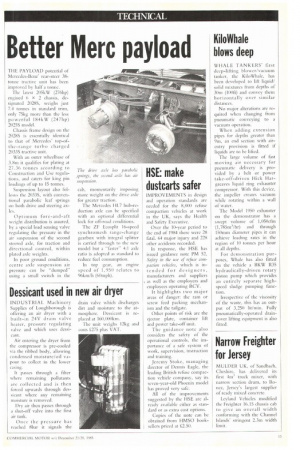HSE: make dustcarts safer
Page 15

If you've noticed an error in this article please click here to report it so we can fix it.
IMPROVEMENTS in design and operation standards are needed for the 8,000 refuse compaction vehicles at work in the UK, says the Health and Safety Executive.
Over the 10-year period to the end of 1984 there were 28 fatal, 64 major injury and 228 other accidents recorded.
In response, the HSE has issued guidance note PM 52, Safety in the use of rclitse compaction vehicles, which is inten ded for designers, manufacturers and suppliers as well as the employers and employees operating RCV.
It highlights two major areas of danger: the ram or screw feed packing mechanism and the tailgate.
Other points of risk are the ejector plate, container lift and power take-off unit.
The guidance note also considers the safety of the operational controls, the itnportance of a safe system of work, supervision, instruction and training.
Jeremy Stoke, managing director of Dennis Eagle, the leading British refuse compaction vehicle company, say its seven-year-old Phoenix model has proved very safe.
All of the improvements suggested by the HSE are already available either as standard or as extra cost options.
Copies of the note can be obtained from HMSO booksellers priced at $1:2.50.












































































